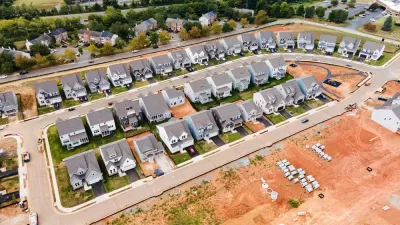According to the Urban Institute's Housing Affordability for Renters Index, the number of renters who can afford to buy a home in their metropolitan area is generally increasing when compared to the housing bubble of the mid-2000s.

Laurie Goodman and John Zhu share news of a recently published Housing Affordability for Renters Index (HARI).
Goodman, Zhu, and colleagues at the Urban Institute created the HARI in March 2018, and have updated the index for 2019.
"The HARI improves upon other affordability measures by focusing exclusively on renters’ ability to buy homes," according to the post. "Moreover, unlike other indexes which focus on the average income, HARI evaluates the whole distribution of renter incomes in an area."
The report examines homeownership affordability for renters in 100 U.S. metropolitan statistical areas, using 2017 American Community Survey and the 2017 Home Mortgage Disclosure Act data.
The report summarizes its findings thusly: "For the nation as a whole in 2017, 27 percent of renters earned at least as much as households who recently purchased a home using a mortgage, a number similar to 2016. For most MSAs…affordability in 2017 was higher than it was in 2006, lower than it was in 2009, and similar to how it was in 2016."
For additional historical perspective: "For the 100 most-populous MSAs, houses were more affordable to local renters in 2017 than they were in 2006. In 2006, at the height of the housing bubble, fewer renters had the income to purchase a home. We observe an average of 6 percent more renters between 2006 and 2017 had the income to purchase a house."
FULL STORY: Housing Affordability for Renters Index: Local Perspective and Migration

Planetizen Federal Action Tracker
A weekly monitor of how Trump’s orders and actions are impacting planners and planning in America.

Chicago’s Ghost Rails
Just beneath the surface of the modern city lie the remnants of its expansive early 20th-century streetcar system.

San Antonio and Austin are Fusing Into one Massive Megaregion
The region spanning the two central Texas cities is growing fast, posing challenges for local infrastructure and water supplies.

Since Zion's Shuttles Went Electric “The Smog is Gone”
Visitors to Zion National Park can enjoy the canyon via the nation’s first fully electric park shuttle system.

Trump Distributing DOT Safety Funds at 1/10 Rate of Biden
Funds for Safe Streets and other transportation safety and equity programs are being held up by administrative reviews and conflicts with the Trump administration’s priorities.

German Cities Subsidize Taxis for Women Amid Wave of Violence
Free or low-cost taxi rides can help women navigate cities more safely, but critics say the programs don't address the root causes of violence against women.
Urban Design for Planners 1: Software Tools
This six-course series explores essential urban design concepts using open source software and equips planners with the tools they need to participate fully in the urban design process.
Planning for Universal Design
Learn the tools for implementing Universal Design in planning regulations.
planning NEXT
Appalachian Highlands Housing Partners
Mpact (founded as Rail~Volution)
City of Camden Redevelopment Agency
City of Astoria
City of Portland
City of Laramie





























